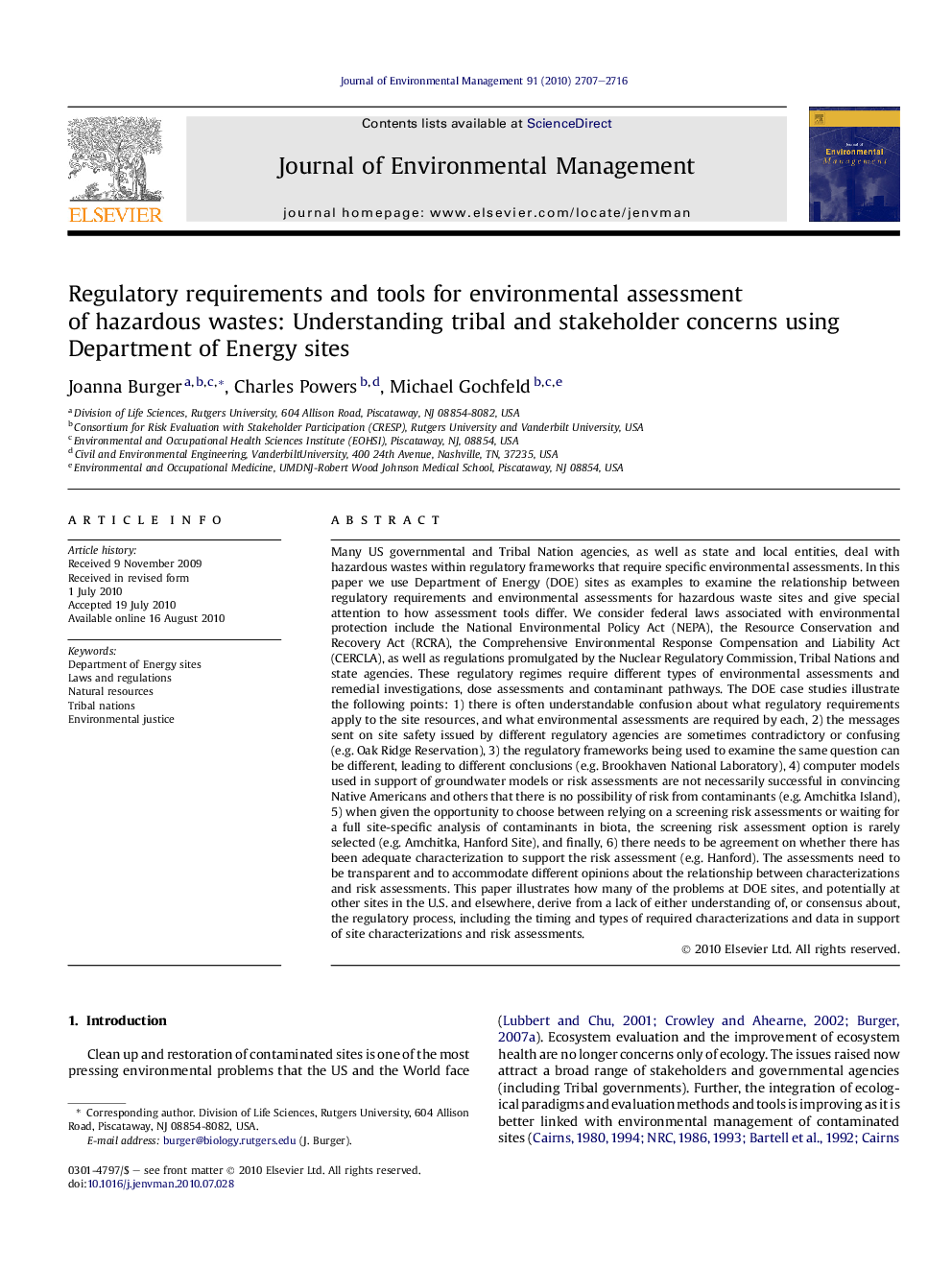| کد مقاله | کد نشریه | سال انتشار | مقاله انگلیسی | نسخه تمام متن |
|---|---|---|---|---|
| 1057580 | 947081 | 2010 | 10 صفحه PDF | دانلود رایگان |

Many US governmental and Tribal Nation agencies, as well as state and local entities, deal with hazardous wastes within regulatory frameworks that require specific environmental assessments. In this paper we use Department of Energy (DOE) sites as examples to examine the relationship between regulatory requirements and environmental assessments for hazardous waste sites and give special attention to how assessment tools differ. We consider federal laws associated with environmental protection include the National Environmental Policy Act (NEPA), the Resource Conservation and Recovery Act (RCRA), the Comprehensive Environmental Response Compensation and Liability Act (CERCLA), as well as regulations promulgated by the Nuclear Regulatory Commission, Tribal Nations and state agencies. These regulatory regimes require different types of environmental assessments and remedial investigations, dose assessments and contaminant pathways. The DOE case studies illustrate the following points: 1) there is often understandable confusion about what regulatory requirements apply to the site resources, and what environmental assessments are required by each, 2) the messages sent on site safety issued by different regulatory agencies are sometimes contradictory or confusing (e.g. Oak Ridge Reservation), 3) the regulatory frameworks being used to examine the same question can be different, leading to different conclusions (e.g. Brookhaven National Laboratory), 4) computer models used in support of groundwater models or risk assessments are not necessarily successful in convincing Native Americans and others that there is no possibility of risk from contaminants (e.g. Amchitka Island), 5) when given the opportunity to choose between relying on a screening risk assessments or waiting for a full site-specific analysis of contaminants in biota, the screening risk assessment option is rarely selected (e.g. Amchitka, Hanford Site), and finally, 6) there needs to be agreement on whether there has been adequate characterization to support the risk assessment (e.g. Hanford). The assessments need to be transparent and to accommodate different opinions about the relationship between characterizations and risk assessments. This paper illustrates how many of the problems at DOE sites, and potentially at other sites in the U.S. and elsewhere, derive from a lack of either understanding of, or consensus about, the regulatory process, including the timing and types of required characterizations and data in support of site characterizations and risk assessments.
Journal: Journal of Environmental Management - Volume 91, Issue 12, December 2010, Pages 2707–2716